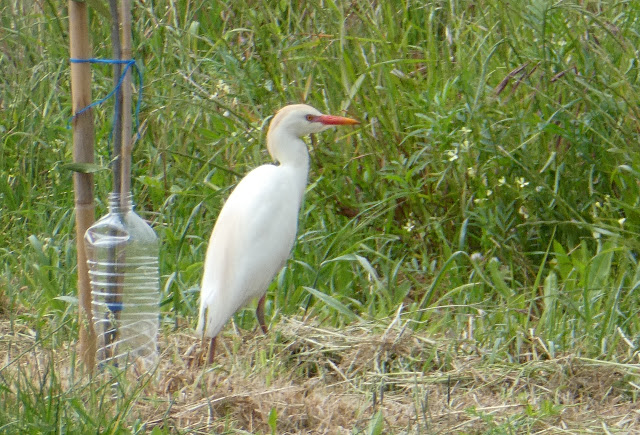Another fine day with light winds saw another small arrival. This time Whiethroat, Sedge, Great Reed and Icteine Warblers, Redstarts and Spotted Flycatchers were the main species of grounded migrants. There was also a strong movement of hirundines late morning and the total of 243 Sand Martins was more than six times the best previous day total of 39 on 3rd May 2009. The total of 66 House Martins was also our 3rd best Spring count.
The first Black-headed Bunting of the year was singing below Beehive Pass early on and another two were seen later at Koureli.
An Eleonara's Falcon that went north at Koureli at lunchtime was also a first for the year.
Grounded Migrants: 20 Woodchat Shrike, 14 Great Reed Warbler, 15 Sedge Warbler, 59 Whitethroat, 15 Garden Warbler, 14 Icterine Warbler, 6 Wood Warbler, 9 Redstart,14 Whinchat, 10 Nightingale, 14 Pied Flycatcher, 1 Collared Flycatcher, 44 Spotted Flycatcher
Visible Passage: 28 Common Swift, 20 Common/Palliid Swift, 2 Pallid Swift, 243 Sand Martin, 66 House Martin, 62 Swallow, 19 Red-rumpled Swallow,
Raptors: 1 Honey Buzzard, 2 Hobby, 5 Kestrel, 1 Falcon Sp.
Overall Total: 38 birds ringed from 78m of nets.
Weather: Initially NE 2-3, later SE or SSE 3 occasionally. The sky was hazy with Saharan dust from early on and grew increasingly so during the afternoon. Visibility was again excellent with Crete again discernible.































